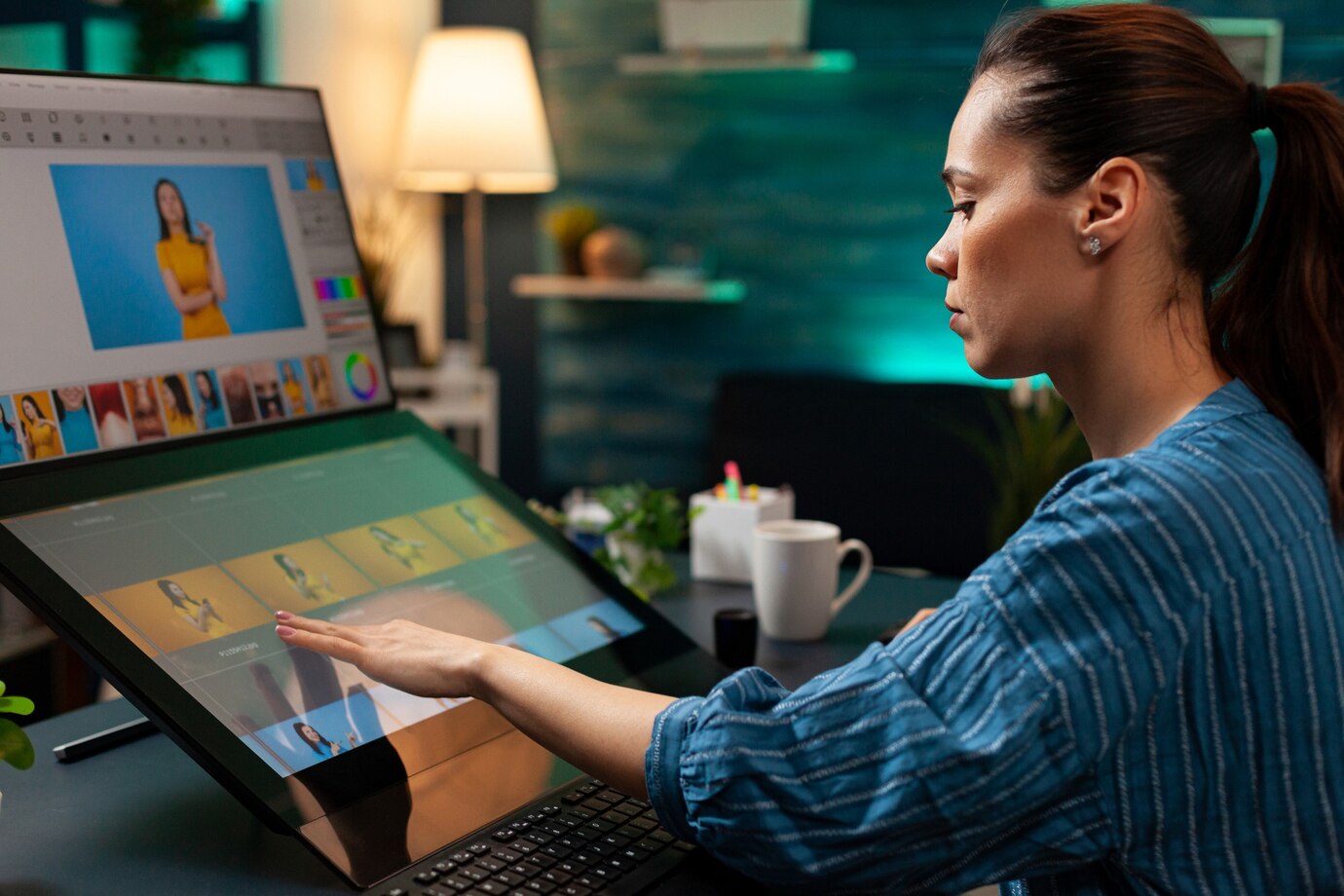Playing around with visual tools can transform simple images into eye-catching designs. Whether you’re a beginner or someone looking to polish your skills, mastering a few editing techniques can make all the difference. By layering images, you add depth and interest. Masking allows you to hide parts of a picture, creating a more refined look.Enhancing images using adjustments and filters can bring new life to your photos. These enhancements help correct lighting or add a touch of drama. Filters can change the mood of an image instantly, making it more vibrant or giving it a vintage feel.Adding text with special effects creates dynamic visuals for posters or social media. By learning how to export and share your visuals effectively, you ensure your creations are seen in their best light. These easy techniques can help turn ordinary photos into something extraordinary. Dive into this blog to discover how you can apply these methods to boost your creative projects.
Mastering Layers and Masking Techniques
Layers are like transparent sheets stacked on top of each other. You can place different elements on each layer without affecting the others. Mixing layers allows you to create complex images with ease. Start by adding a new layer for each main element, like text or images. This keeps your work organised and lets you adjust elements individually.Speaking of organisation, grouping layers is a smart move. By grouping related layers, you can move and edit them all at once. This makes it easier to manage your project, especially when it becomes large with many layers involved.Masking is another important technique. Using masks, you can hide parts of a layer without removing them permanently. This lets you experiment with changes without losing original parts. For example, a mask can gently blend one image into another. It creates smoother transitions, giving your design a polished look.
There are two types of masks you need to know:
- Layer Masks: These allow you to hide or reveal portions of a layer using black, white, and grey shades.
- Clipping Masks: These make the content of one layer take the shape of the layer below it.
Understanding and using these techniques gives you flexibility. You can create effects that bring your images to life while keeping the editing process efficient and non-destructive.
Enhancing Images with Adjustments and Filters
Adjustments are tools that change the look of an image. They help fix common problems like poor lighting or incorrect colours. One popular adjustment is brightness and contrast. It helps balance the light in your photo, making details more visible. Another is the hue/saturation adjustment, which can change colour tones to make them pop.Filters offer a quick way to transform your images. They add unique effects without much hassle. Some filters create artistic touches, like turning a photo into a watercolour painting or adding a vintage feel. Others help sharpen or blur parts of the image to draw attention to specific areas.
When using filters, keep these points in mind:
1. Choose filters that enhance your image’s theme. Don’t use too many at once, as it can crowd the picture.2. Play with the settings. Most filters let you adjust the strength to blend the effect naturally.3. Combine filters for unique results, but test on a copy of your image so the original remains untouched.Adjustments and filters are powerful tools. They help polish images and match them to your creative vision. By experimenting with these features, you can make your photos striking, conveying emotion or mood effectively. Remember, practice helps understand which adjustments and filters work best for your projects.
Creating Dynamic Text and Typography Effects
Creating dynamic text and typography effects is a great way to add flair and personality to your visuals. It’s like giving your words a voice that matches your message. With various tools available, crafting engaging text has never been easier, and it can turn ordinary designs into extraordinary ones.Start by experimenting with different fonts. Choosing the right font can greatly impact the mood of your design. Bold fonts convey strength and confidence, while cursive fonts add elegance and grace. Mixing fonts can also be effective, but use no more than two or three to keep your design clean.Utilise text effects like shadows, outlines, and 3D effects to give your text depth and dimension. These effects can make your words leap off the page, drawing the viewer’s attention. Drop shadows can give the text a floating effect, while outer glows can add a soft highlight.Incorporating colour gradients and textures into your text can make it stand out even more. Gradients blend two or more colours smoothly, creating visually appealing transitions. Using textures can add a tactile quality to your typography, making it appear as though you could touch it.Lastly, don’t forget about alignment and spacing. Properly aligning your text and adjusting the space between letters (kerning) and lines (leading) ensures your text is readable and aesthetically pleasing.
- Choose Fonts Wisely: Use fonts that complement your design’s theme and mood.
- Apply Text Effects: Enhance text with shadows, outlines, and 3D effects for added impact.
- Use Colour and Textures: Add interest with gradients and textures in your text.
By mastering these techniques, your typography can become a powerful tool in your design toolkit, elevating your visuals to the next level.
Exporting and Sharing Your Visuals Efficiently
Exporting and sharing your visuals efficiently is the final step in the creative process. It’s about ensuring your work looks great on different platforms and reaches your audience effectively. Doing this right can make a world of difference in how your visuals are perceived.Start by choosing the right file format. Different formats serve different purposes. JPEGs are great for photos, PNGs work well for images with transparency, and SVGs are ideal for vector graphics. Knowing which format to use ensures your visuals maintain their quality across various mediums.Adjust the resolution based on where you plan to share your design. High resolution is essential for print to prevent pixelation, while lower resolution helps speed up loading times for online content, keeping your site or app user-friendly.Using export tools wisely can streamline the process. Many design programs offer batch-export options, allowing you to save multiple versions of your work at once. This is handy when you need both web and print files.Consider compressing your files for faster downloads. Online tools can reduce file size without losing quality, making your visuals easier to share via email or social media.
- Select the Right File Format: Choose JPEG, PNG, or SVG based on the visual’s needs.
- Match Resolution to Use: Ensure optimal clarity and speed by adjusting resolution appropriately.
- Utilise Export Features: Take advantage of batch-export and compression tools for efficiency.
By paying attention to these details, you can ensure your visuals are seen and appreciated in the best possible way.
Conclusion
Crafting stunning visuals involves mastering a few key techniques. By excelling in dynamic text effects and understanding efficient exporting practices, you elevate both the design and delivery of your projects. These skills not only improve the aesthetic appeal of your work but also ensure that it reaches the audience as intended, maintaining quality across different platforms.Practising these methods consistently will also enhance your overall design abilities. As you become more comfortable with typography and export strategies, you’ll find yourself producing higher-quality work in less time. This efficiency leads to a more fulfilling creative process and the ability to take on more projects or experiment with new ideas.Becoming proficient with these techniques means your designs will communicate more effectively and look more professional. The confidence that comes from mastering these skills will empower you to tackle more complex projects and explore creative projects with less hesitation.Elevate your design skills further by exploring our
online photoshop courses at eCare Upskill. Whether you’re a beginner or looking to refine your expertise, our comprehensive courses can guide you in achieving your creative goals. Join our community and start your journey towards mastering design today!



